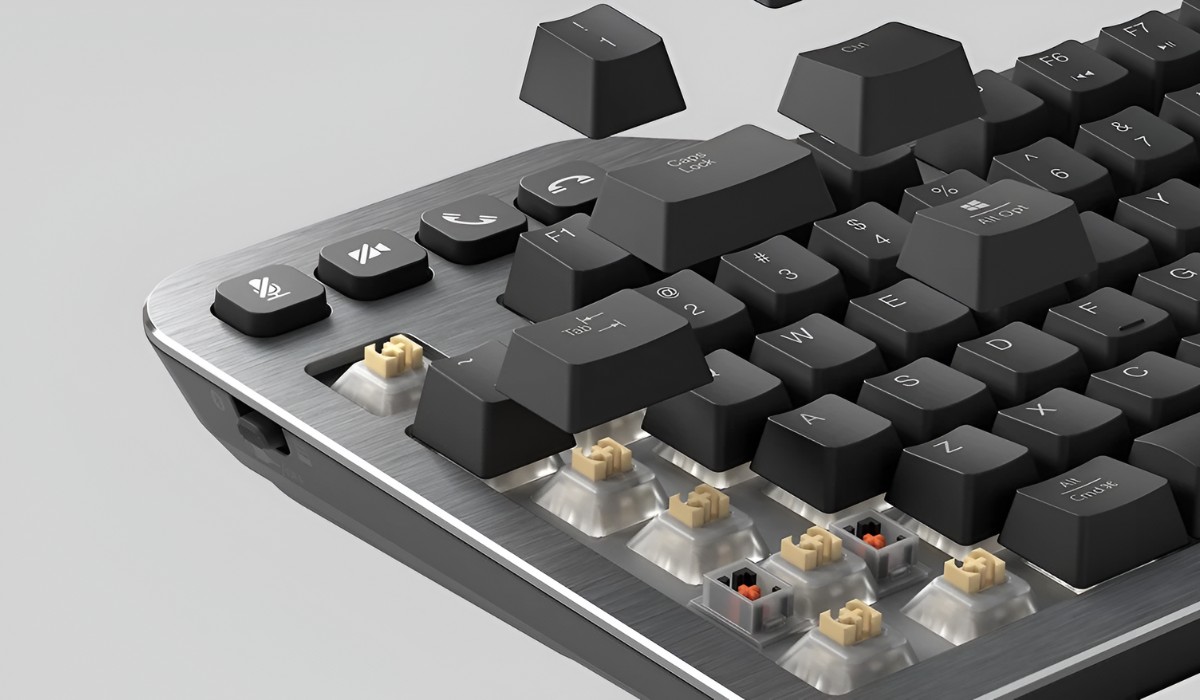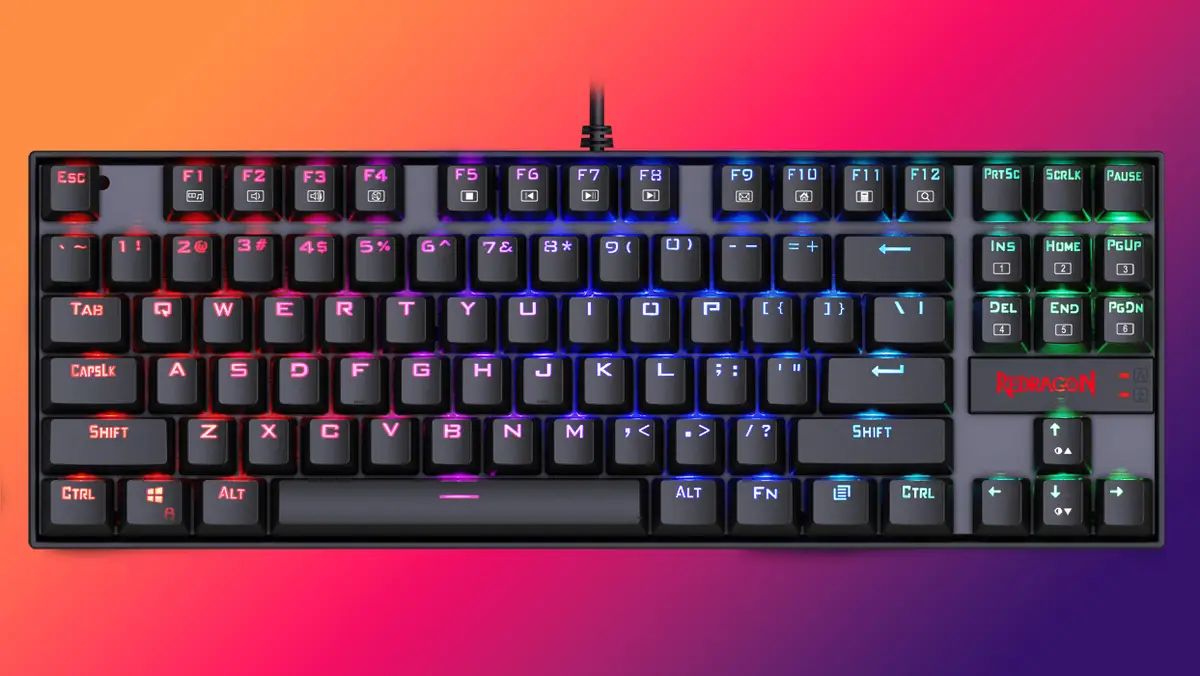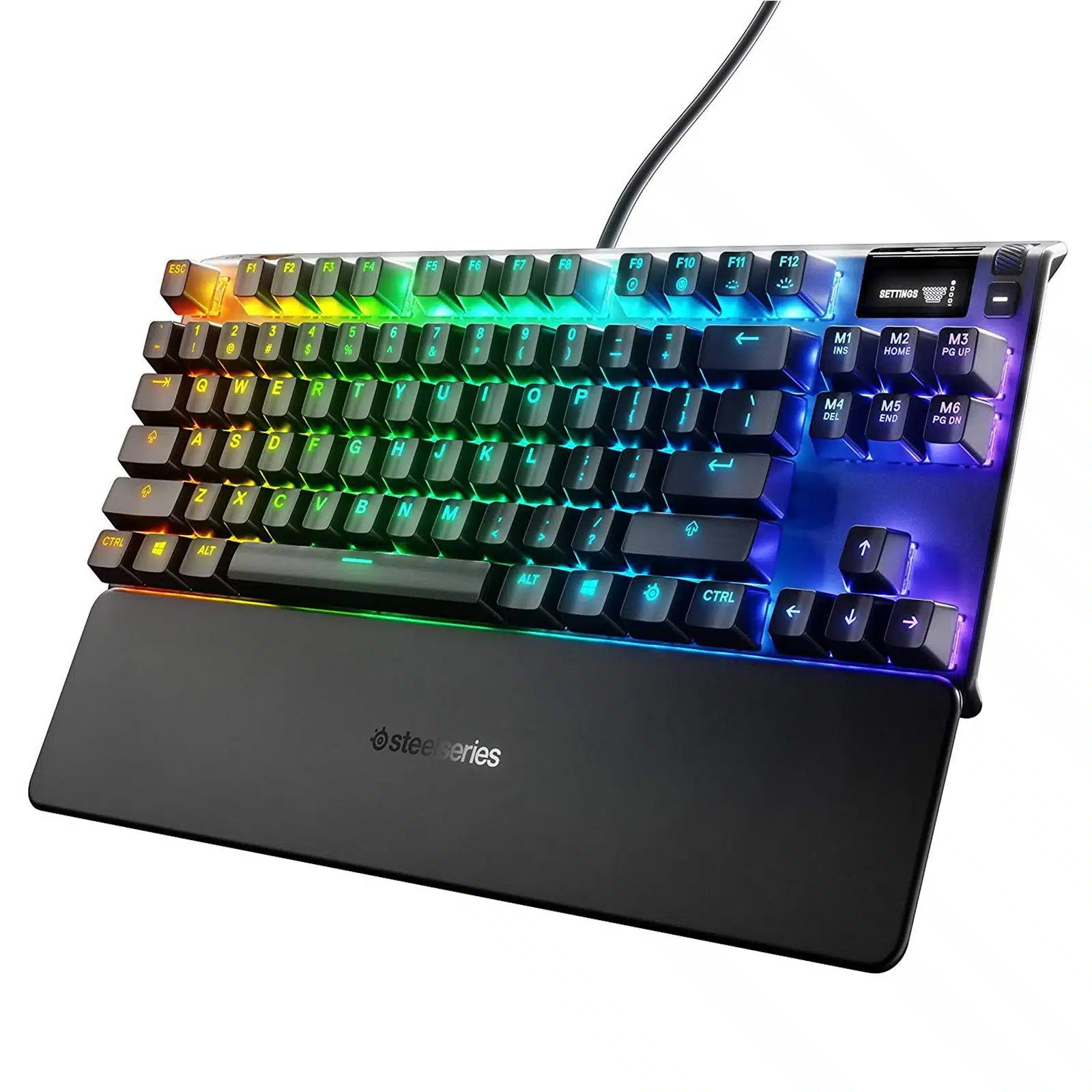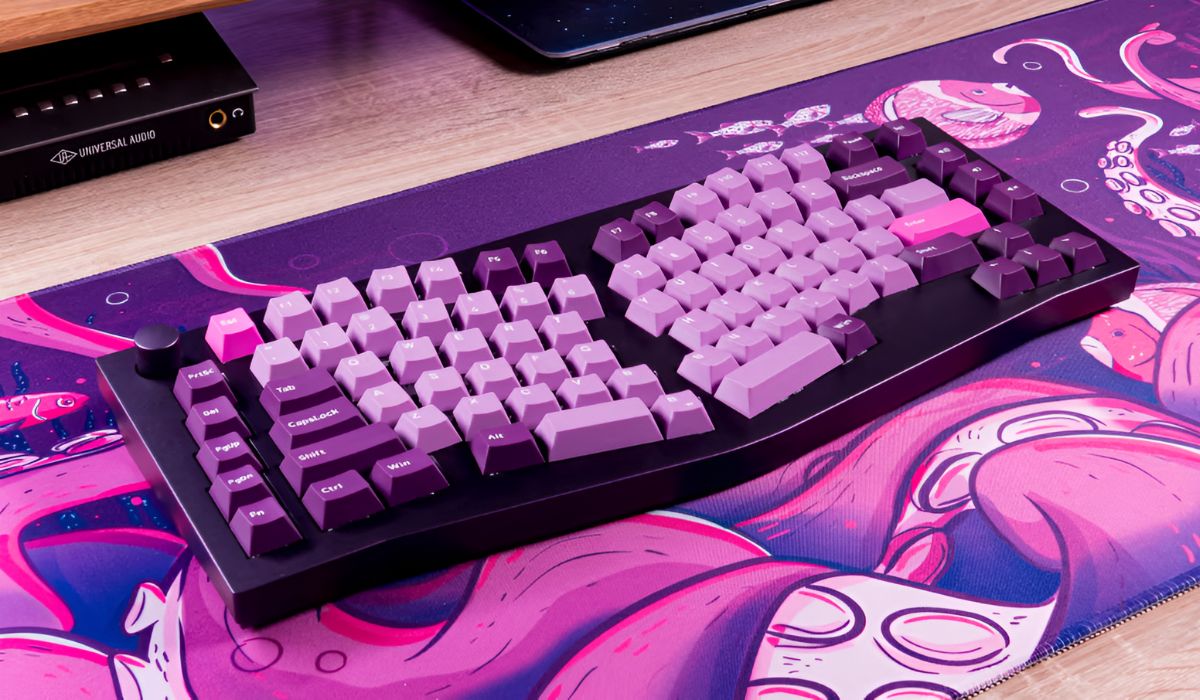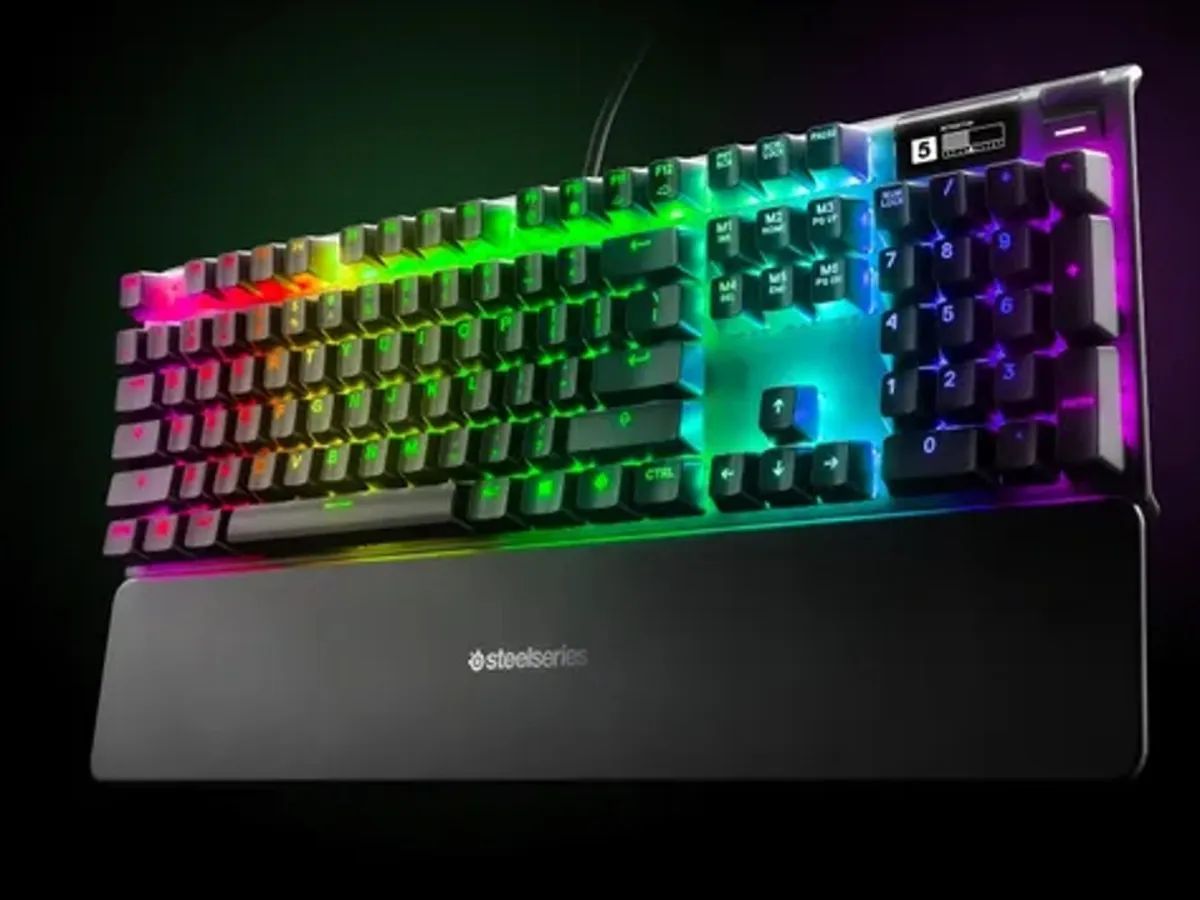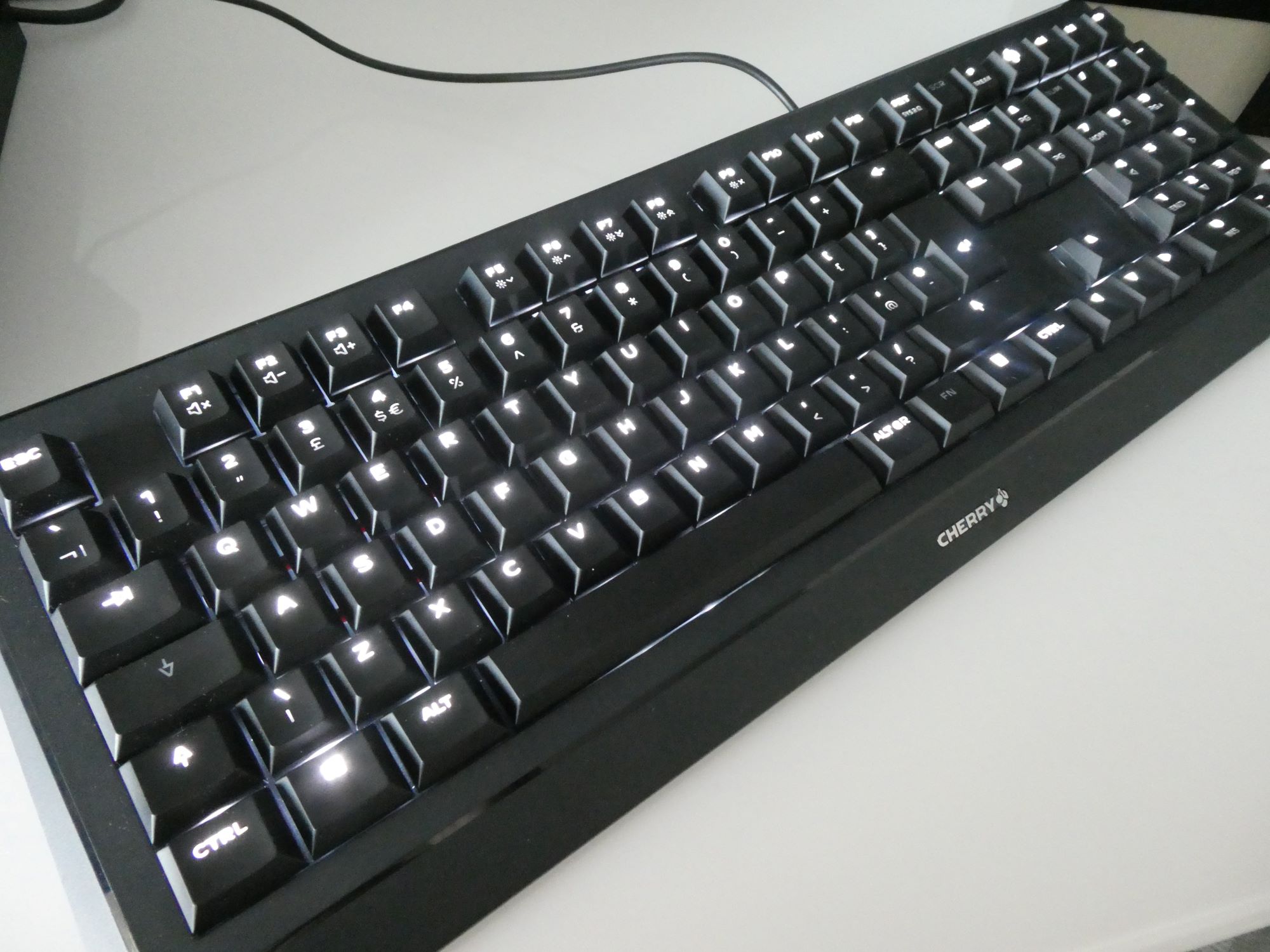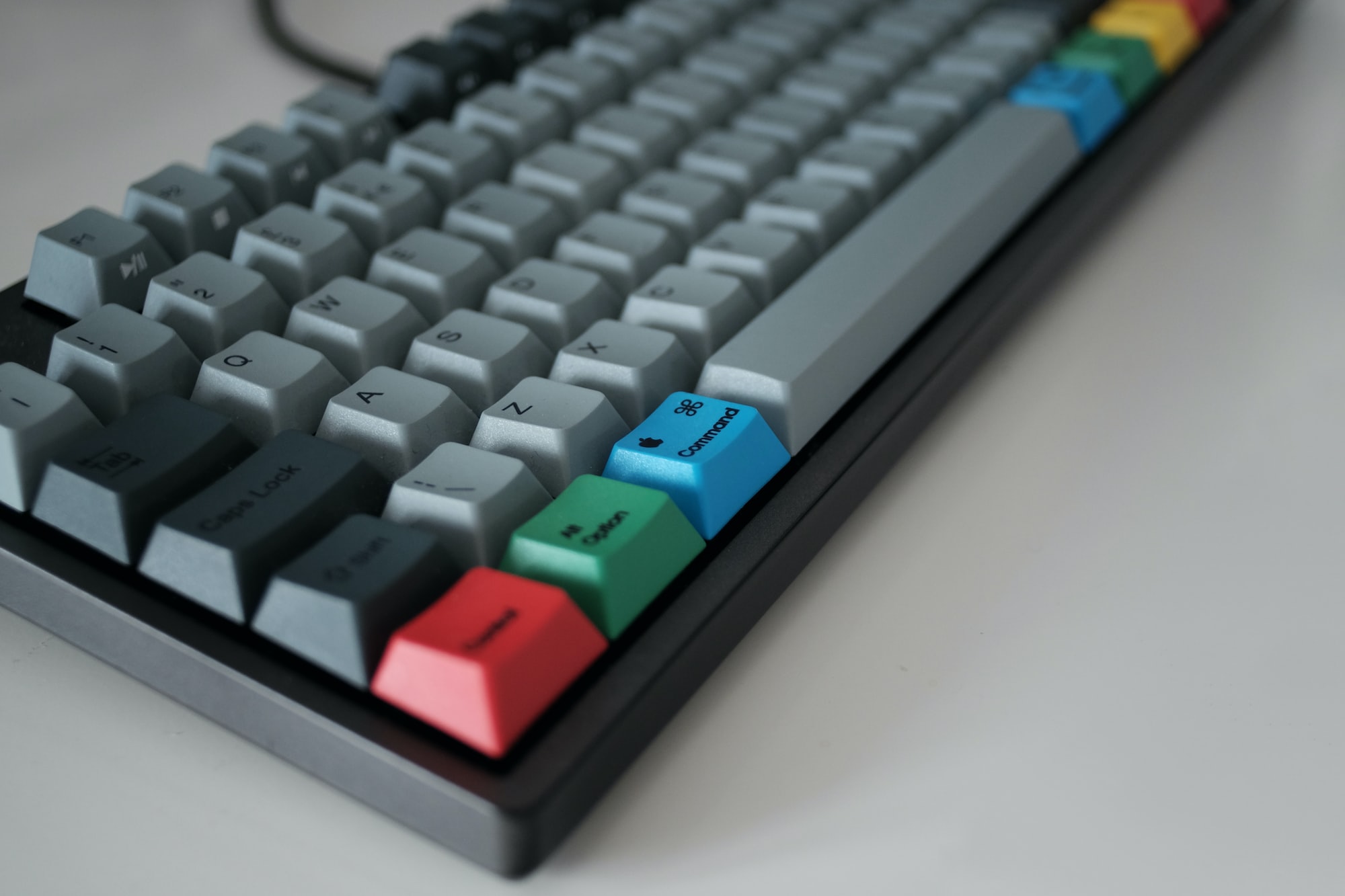Introduction
Understanding the Intricacies of Mechanical Keyboards
Mechanical keyboards have gained immense popularity owing to their tactile feedback, durability, and enhanced typing experience. Unlike their membrane counterparts, mechanical keyboards utilize individual switches for each key, resulting in a distinctive feel and performance. One fascinating aspect of these keyboards is the actuation point, which plays a pivotal role in determining the keystroke's responsiveness and tactile feedback.
The actuation point refers to the precise moment when a keystroke is registered by the keyboard, and it is a defining characteristic of mechanical switches. Understanding this concept is crucial for enthusiasts and professionals alike, as it directly impacts typing speed, gaming performance, and overall user experience. Delving deeper into the mechanics of actuation points unveils a world of precision engineering and ergonomic design, shedding light on the intricate workings of these beloved peripherals.
As we embark on this exploration of mechanical keyboards, we will unravel the mysteries surrounding actuation points, decipher the factors influencing key travel, and uncover the ingenious solutions devised to optimize keystroke responsiveness. Join us on this enlightening journey through the heart of mechanical keyboards, where every keystroke is imbued with meaning and precision.
Understanding Actuation Point
Deciphering the Essence of Keystroke Responsiveness
At the core of a mechanical keyboard lies the concept of the actuation point, a fundamental attribute that defines the tactile feedback and responsiveness of each keystroke. This pivotal point is the threshold at which a key press is recognized by the keyboard, leading to the transmission of the corresponding signal. Understanding the nuances of actuation points is essential for discerning the distinct feel and performance offered by various mechanical switches.
Each mechanical switch is engineered with a specific actuation point, dictating the amount of force required to register a keystroke. This characteristic gives rise to a spectrum of actuation forces, ranging from light and swift to firm and deliberate, catering to diverse user preferences and typing styles. Keen enthusiasts and professionals often gravitate towards switches with precise actuation points that align with their typing or gaming requirements, thereby enhancing their overall productivity and comfort.
Moreover, the actuation point directly influences the audible feedback produced during typing or gaming sessions. Switches with higher actuation points tend to generate a pronounced click or tactile bump, signaling the successful registration of a keystroke. This auditory confirmation, coupled with the tactile sensation, creates a deeply satisfying typing experience, elevating the act of typing to an art form.
As we delve deeper into the realm of actuation points, we uncover the intricate engineering behind the varying tactile feedback and responsiveness offered by mechanical switches. This profound understanding empowers users to make informed choices when selecting a mechanical keyboard, ensuring that each keystroke resonates with precision and comfort.
Overcoming Actuation Point
Enhancing Efficiency and Precision in Keystrokes
While actuation points are integral to the tactile feedback and responsiveness of mechanical keyboards, users often seek ways to optimize and personalize this crucial aspect to suit their specific needs. Fortunately, the realm of mechanical keyboards offers ingenious solutions to overcome actuation points, empowering users to tailor their typing experience with precision and finesse.
One prominent method of customizing actuation points is through the utilization of switches with adjustable actuation technology. These innovative switches enable users to modify the actuation point of individual keys, allowing for a personalized typing or gaming experience. By fine-tuning the actuation point to align with their preferences, users can enhance their typing speed, gaming performance, and overall comfort, thereby elevating their interaction with the keyboard to new heights.
Furthermore, the advent of advanced firmware and software solutions has revolutionized the customization of actuation points, offering users a myriad of options to tailor the keystroke responsiveness to their liking. Through intuitive interfaces and user-friendly software, individuals can effortlessly adjust actuation points, assign macros, and fine-tune the keyboard’s behavior, amplifying their efficiency and precision in every keystroke.
Additionally, the evolution of hybrid switches has paved the way for unparalleled flexibility in overcoming actuation points. These hybrid marvels seamlessly blend the attributes of mechanical and membrane switches, presenting users with a versatile platform to customize actuation points and tactile feedback. This innovative approach not only caters to diverse user preferences but also showcases the boundless potential for enhancing the keystroke experience.
By harnessing these innovative methods and technologies, users can transcend the constraints of traditional actuation points, unlocking a realm of personalized precision and efficiency in every keystroke. This journey towards overcoming actuation points exemplifies the relentless pursuit of excellence and customization in the realm of mechanical keyboards, empowering users to craft a typing experience that resonates with their unique preferences and demands.
Factors Affecting Key Travel
Unraveling the Dynamics of Keystroke Distance and Feedback
Key travel, the distance a key travels from its resting position to the actuation point, is a critical aspect that profoundly influences the typing experience on mechanical keyboards. Several factors intricately shape key travel, culminating in a diverse array of tactile feedback and responsiveness. Understanding these factors unveils the nuanced dynamics of keystroke distance and feedback, offering profound insights into the essence of mechanical keyboards.
One of the primary factors influencing key travel is the design of the switch mechanism. Different switch designs, such as linear, tactile, and clicky switches, exhibit varying key travel distances and tactile feedback. Linear switches, known for their smooth and consistent keystrokes, often feature shorter key travel distances, catering to users who prefer swift and precise typing. Conversely, tactile and clicky switches encompass distinct tactile feedback and extended key travel distances, appealing to users who seek pronounced feedback and a more deliberate keystroke experience.
Furthermore, the actuation force required to register a keystroke significantly impacts key travel. Switches with higher actuation forces often entail longer key travel distances, providing users with a tangible sensation of the keystroke being registered. This attribute contributes to a heightened sense of control and precision, particularly favored by individuals engaged in gaming or tasks that demand precise input.
The material composition of the keycaps also plays a pivotal role in shaping key travel. Keycaps crafted from different materials, such as ABS or PBT plastic, exhibit varying degrees of rigidity and texture, thereby influencing the tactile feedback and overall key travel experience. Additionally, the keycap profile, such as OEM, Cherry, or SA profiles, introduces subtle variations in key travel, allowing users to select keycaps that complement their preferred typing or gaming style.
As we unravel the multifaceted factors affecting key travel, we gain a profound appreciation for the meticulous engineering and ergonomic considerations woven into the fabric of mechanical keyboards. This comprehensive understanding empowers users to navigate the diverse landscape of key travel, enabling them to select keyboards and switches that harmonize with their unique preferences and elevate their typing experience to unparalleled heights.
Conclusion
Embracing the Artistry of Keystroke Precision
Embarking on a journey through the realm of mechanical keyboards unveils a tapestry of precision engineering, ergonomic design, and personalized customization, all converging to redefine the essence of keystroke precision. The intricate concept of actuation points, pivotal in shaping the tactile feedback and responsiveness of each keystroke, serves as the cornerstone of this captivating domain.
As we navigated the nuances of actuation points, we discovered the profound impact of this attribute on the typing and gaming experience. From the discerning selection of switches with precise actuation points to the advent of customizable switches and advanced software solutions, users are empowered to transcend the confines of traditional actuation points, crafting a personalized keystroke experience that resonates with their unique preferences and demands.
Furthermore, our exploration delved into the factors influencing key travel, unraveling the intricate dynamics that shape the distance and feedback of each keystroke. The interplay of switch designs, actuation forces, and keycap materials offers a rich tapestry of options for users to tailor their typing experience, ensuring that every keystroke embodies a harmonious blend of precision and comfort.
Ultimately, the realm of mechanical keyboards transcends mere peripherals; it embodies the artistry of keystroke precision, where every touch of a key is imbued with meaning and finesse. The relentless pursuit of excellence in engineering, coupled with the boundless potential for customization, propels the world of mechanical keyboards into a realm where keystroke precision becomes an art form, elevating the act of typing and gaming to an immersive and deeply satisfying experience.
As we embrace the artistry of keystroke precision, let us revel in the boundless possibilities that await, where every keystroke becomes a testament to individuality, precision, and the seamless fusion of technology and art.







